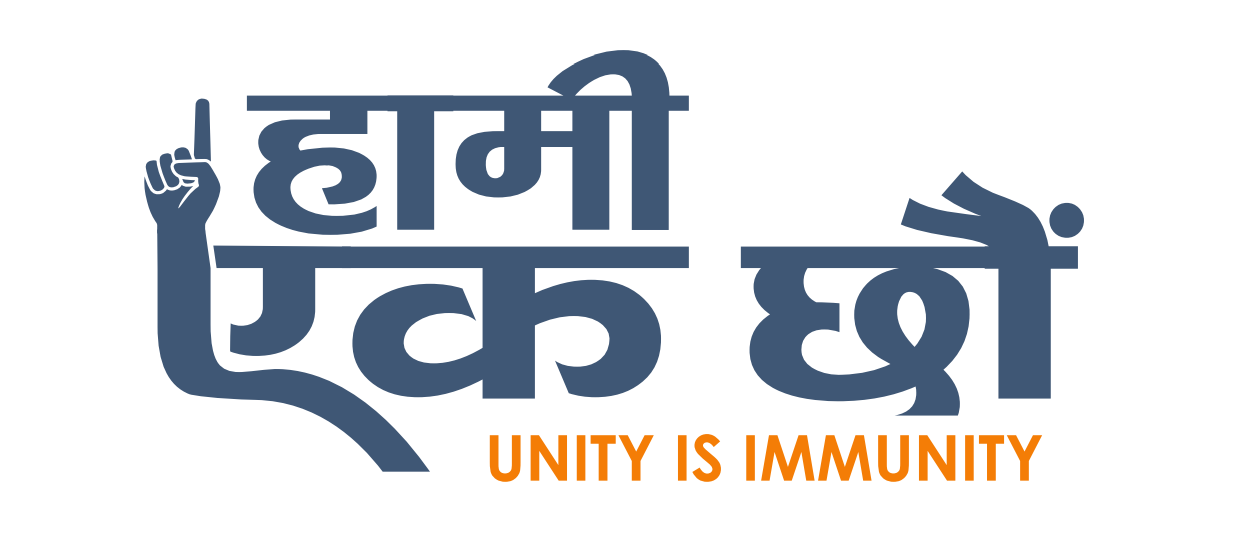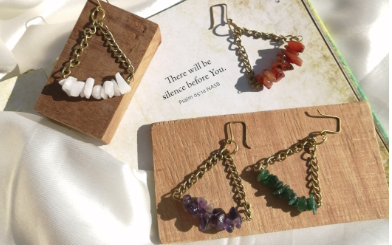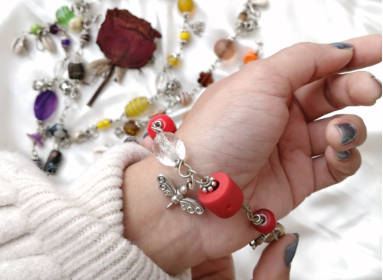Superheroes | Nepali nurses risking it all
Narbada Thapa, nursing supervisor, Tribhuvan University Teaching Hospital (TUTH), was terrified when the World Health Organization declared a pandemic in March 2020. Despite her two-decade-long career, she felt unprepared to deal with what was happening. In the months that followed, Nepal too saw a surge in the number of Covid-19 cases. The condition then, says Thapa, wasn’t as grave as it is now but the sense of unease was more.
Narbada Thapa
“We didn’t know how to deal with highly infectious diseases. We were baffled,” says Thapa. In the past year, she has worked with a lot of covid patients and she is no longer scared of the virus. Nurses, she says, can’t afford to be.
According to Thapa, during the first wave of Covid-19, there were limited PPEs. This required a nurse wearing one to be on duty for 10 to 12 hours without a break. It’s not possible to eat, drink or go to the bathroom while clad in a PPE so many of her colleagues went unimaginably long hours without food or water. Some even wore diapers.
Thankfully that isn’t the case anymore, says Thapa. But that doesn’t mean their work is any less daunting. The second wave of Covid-19 has brought forth a new set of challenges, from shortage of oxygen and ventilators to being unable to provide the one-on-one care that critical patients require. The viral strain is stronger and highly contagious and, compared to earlier, there are more serious cases.
There are also many deaths every day, which is unsettling. Additionally, every day is harrowing and humiliating: Sometimes, frustrated family members get angry and abusive. Mana Kumari Rai, president of Nursing Association of Nepal (NAN), says many times nurses have been physically abused because family members weren’t allowed into the ICU or they felt their patient wasn’t being looked after properly.
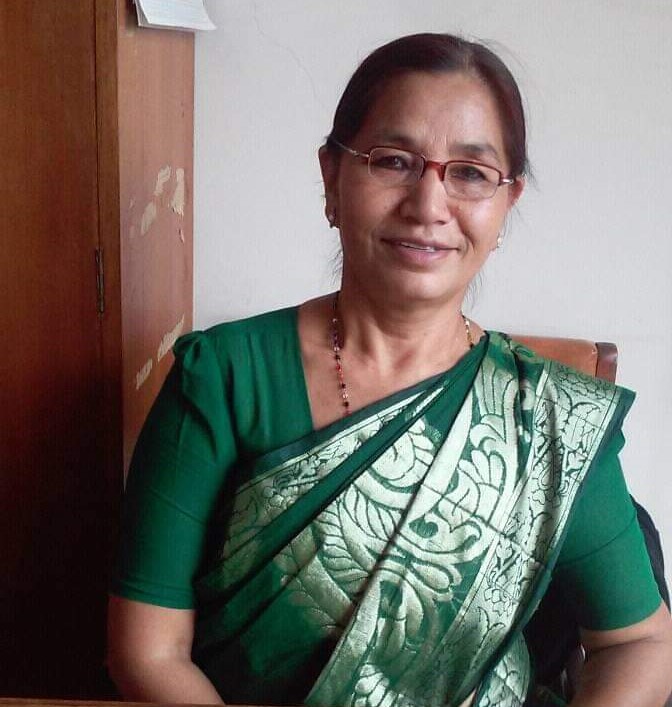 Mana Kumari Rai
Mana Kumari Rai
But valiant nurses on the frontlines don’t let anything dampen their sprits. Given the rate of infection and the rise in the number of people needing medical intervention, hospitals are inundated. Every nurse, who earlier used to work in eight-hour shifts, is on a 12-hour shift, and sometimes without breaks too.
Durga Shrestha, matron, Bheri Hospital in Nepalgunj, says they are so short-staffed that it’s impossible for those on duty to get a moment’s rest. The hospital has 260 general beds and 100 emergency beds and not a single one is empty. On top of that, they get hundreds of calls every day, from friends and friends of friends, seeking help.
“We try to accommodate as many people as possible. But our best isn’t enough anymore,” says Shrestha, adding they had anticipated a second wave and even prepared for it. What they didn’t foresee was how catastrophic it would be.
 Durga Shrestha
Durga Shrestha
Bheri Hospital is the referral site for three provinces and thus they get a lot of patients. Upon arrival at the hospital, the oxygen saturation of some patients has been as low as 40. There’s very little chance of recovery in such cases.
“It hurts knowing we won’t be able to save them. Worse, we are sometimes forced to watch people suffer because of reduced oxygen supply and equipment and medicine shortage,” she says. The hospital needs over 400 cylinders every day. There are times when there’s a demand and supply gap for an hour or two and many people lose their lives.
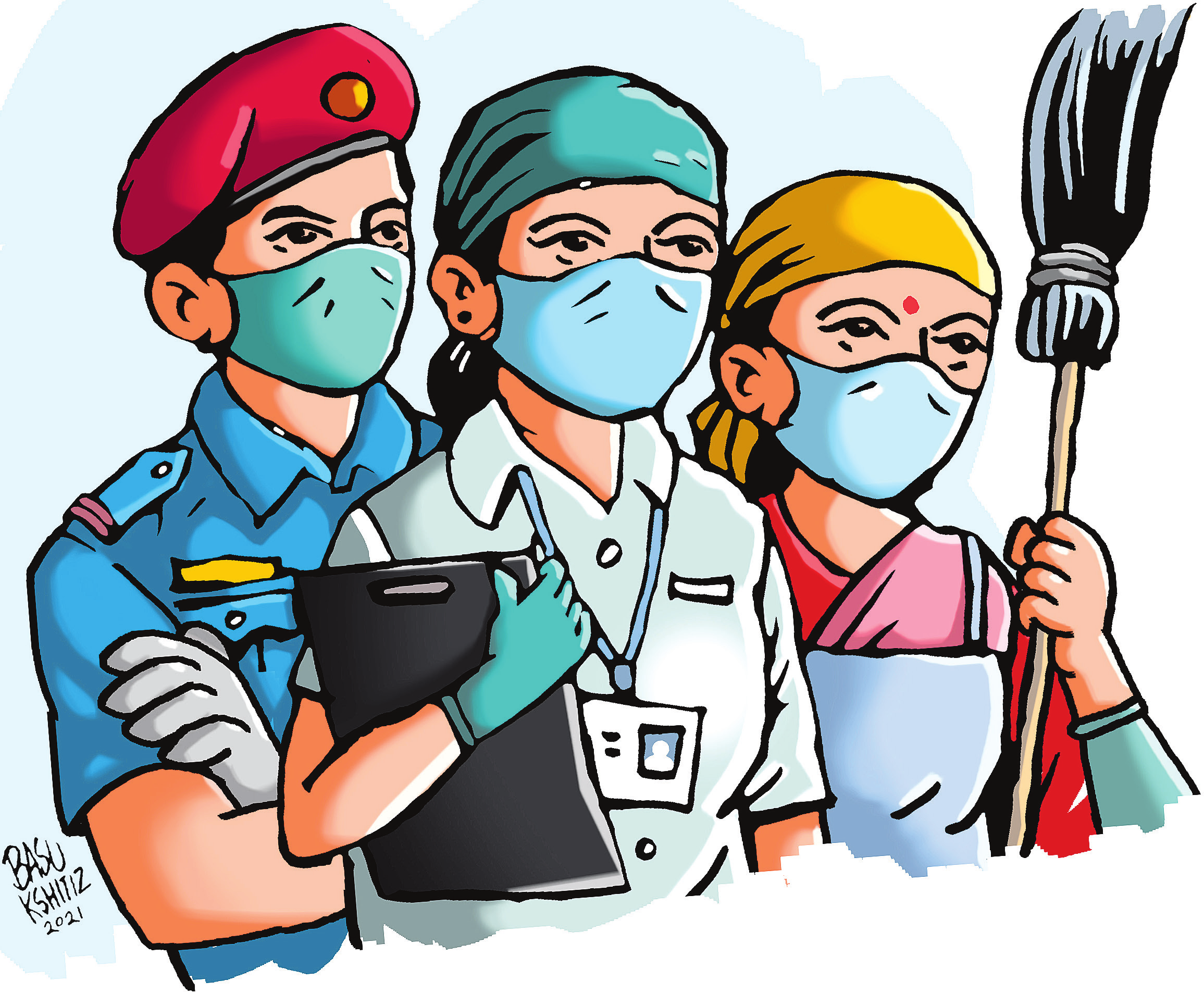
Nursing is basically bedside care and when you work so closely with patients—talking to them, hearing their stories—you are bound to get attached. Not being able to save them, especially when they tell you they want to live but feel like they are slowly suffocating to death, is heartbreaking. Nurses working in covid ICUs and wards say they are filled with guilt. When one death follows another, the effect is numbing.
Prabha Gautam, a critical care nurse, says the workload is immense and exhausting. She has no time for her family and her two-year-old son. Even when she is home, her mind is at work, wondering if some of her patients will survive the night and what reality awaits her the next day.
 Prabha Gautam
Prabha Gautam
“I know there is a need for me to detach and take care of my mental well-being. But there’s no wiping certain painful images from my head. It’s traumatic,” she says.
Sleeplessness, chronic headache, anxiety and stress are some of the many issues these healthcare workers face. They also have sweating-related itchiness due to long hours in gowns and PPEs. Some have wounds on their faces because masks have to be worn tightly. What do they do? Put band-aids on them before strapping their masks back on and resume work.
Most nurses have also been living in isolation in their own homes since the start of the pandemic. Thapa can’t remember the last time she had a meal with her family or met her granddaughter. Abodh Kumar Shah, staff nurse at TUTH, says he hasn’t met his parents. He desperately wants to but their safety is more important.
 Abodh Kumar Shah
Abodh Kumar Shah
Every nurse ApEx spoke to confessed their families were worried about them. Chhetra Rokka, nursing supervisor, Pokhara Academy of Health Sciences, who has been working for 27 years, says her husband wanted her to retire and stay at home. But she would have regretted it if she had quit at a time when her services were required the most.
Her son suggested that the family should focus on keeping their immunity up by having nutritious food and exercise extreme caution to minimize the risk of infection. Rokka’s family have, so far, managed to stay safe.
Not all have been as lucky. Shrestha and her entire family have been infected. Thapa too had covid and it was horrible, she says. Rai, president, NAN, says many nurses across the nation have been infected and some have had to be kept on ventilators.
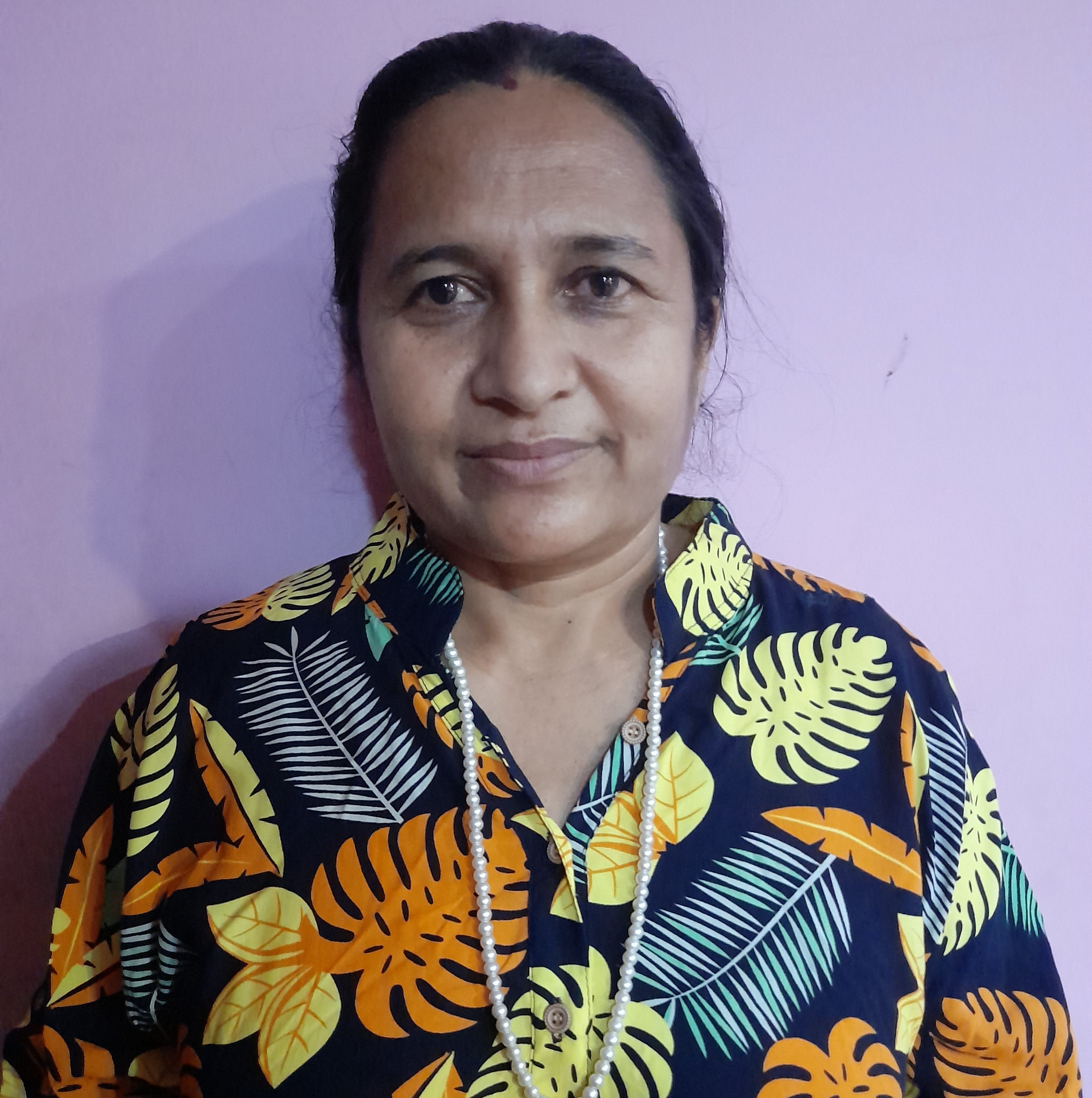 Chhetra Rokka
Chhetra Rokka
“It’s a difficult time but we can’t and won’t give up. I would like to request people not to take the virus lightly. Wear a mask, stay home, practice social distance, and help us stop the spread,” concludes Rai.
Dialing 102: A colossal waste of time
A harrowing personal account of trying to call an ambulance in Kathmandu
A week ago, my aunt’s blood sugar dropped and she lost consciousness. It was 7:00 pm and we called an ambulance. One finally arrived. It was 8:15 pm.
It was an hour of mad frenzy with my husband and I calling a particular number only to be given another as my aunt lay unconscious and sweating profusely. On our way to her place, we called 102, the emergency hotline for ambulance services. A very sleepy sounding woman picked up after what felt like an eternity and told us to call another number. And so, it started.
This process continued for a while till one ambulance driver finally agreed to come. We must have called at least a dozen numbers by then. This driver said he was at Tribhubhan University Teaching Hospital in Maharajgunj and that it would take him 15 minutes to get to our location in Battisputali.
Five minutes later, he called back and ranted about how it was going to be difficult for him to find us, going on and on about needing to know the exact distance from the Gaushala crossroad. We told him we would be standing on the street, keeping an eye out for an ambulance, and that he would see us as soon as he passed Hotel Dwarika.
He called us again 10 minutes later. We could see an ambulance headed in our direction. We asked him if he could see us, waving our arms. It shouldn’t have been difficult, considering there were very few people out on the street and my husband is over six feet tall. But, very nonchalantly, he said he had decided not to come and that we should try somewhere else.
Every ambulance service/driver we called asked us the same thing: Covid ho ki hoina? (“Is it Covid?”), Jworo cha ki chaina? (“Does she have fever?”). Some said they weren’t equipped to handle Covid cases. Most blatantly said they wouldn’t come if she had had fever at any point in recent days. Others just seemed uninterested to do their jobs. I say this because their response was quite literally along the lines of ‘can’t come because we don’t want to’.
One particular ambulance service told us to wait as the ‘Covid ambulance’ had gone to Bhaktapur to pick up three patients and that would take at least two hours.
What complicated things more was that my husband and I had been quarantining at home as one of our friends/colleagues had recently tested positive. We didn’t have any signs of infection but, as we had received both the vaccines, we feared we could be asymptomatic.
So, we didn’t think it was a good idea to take my aunt to the hospital in our car. We also felt we wouldn’t be able to carry her down two flights of stairs without chancing further injury. But it was becoming increasingly likely that this was the risk we would have to take.
Then, giving it one last try, I called Dr Shailendra Kushwaha, consultant cardiologist at Norvic International Hospital. Dr Kushwaha had been, until recently, working with Dr J. P Jaiswal who has been my parent’s go-to doctor for two decades now and who has saved both my parents lives at least once.
My aunt was recently discharged from the hospital where she had been under Dr Kushwaha’s care. He has been our knight in shining armor. After talking to me, he got in touch with Norvic’s ambulance services and messaged me a number to call. He even rang back to confirm I had received the text.
When I called the number, in the background, I could hear someone say ‘yo doctor le bhannu bhayeko case ho’ (“This is the case the doctor was talking about”). I sensed they would have said no if they could have. However, even with Dr Kushwaha requesting them to attend to us, we had to go through the rigmarole of talking to two different people, twice each, and assuring them that my aunt didn’t have fever at the moment, and that she had ‘just fainted’. Finally, an ambulance was dispatched.
What happened when the ambulance arrived is another story: With only the driver, who behaved like he was coming to pick up a bag of groceries, and no trained paramedic, more time was wasted in getting someone who couldn’t move on her own into the vehicle and then taking her to the hospital with no medical intervention whatsoever. When we finally reached the hospital and my aunt was rushed to the emergency, her blood glucose level was 25. Had it dropped any further (had there been more delays) she could have gone into a coma.
They say all’s well that ends well. And, fortunately, that has been true for us. But thoughts of that night still make me shudder. We could have been too late. There might have been people for whom it has been too late. I wonder how many people must have lost their lives because they didn’t make it to the hospital on time. That’s the sad reality of the times we live in today.
I reached out to family and friends and asked them if they had faced similar issues. A friend complained about no one picking up the hotline number. Another said the driver started negotiating, saying he would come provided he would be paid 10 times the going rate. Quite a few have had to deal with rude drivers who said they would come, hung up, and then didn’t take their calls anymore.
It’s said that pre-hospital handling is a crucial part of medical care. Various studies have suggested that injuries and deaths can be drastically reduced if you get professional help within a certain time. Ambulance drivers and paramedics are at great risk but given the importance of their work and also the fact that they haven’t quit their jobs in favor of staying at home, should they be allowed to endanger lives by their couldn’t-care-less attitude?
Hospitals and frontline workers are inundated. Despite that, every hospital is still miraculously managing to attend to emergency cases, whether it’s related to covid or not. But inefficient ambulance services with unscrupulous drivers who want to get their paychecks without doing their jobs are unnecessarily putting more lives at risk.
Nepal Police: Their side of the lockdown story
At 4:45 am every day, since the start of the lockdown on April 29, 5,200 police officers sit down for a daily briefing at different stations across the valley. Much before our alarms go off, these men and women reach their designated places to begin their 15- to 16-hour-long duty.
SSP Basanta Bahadur Kunwar, Nepal Police central spokesperson, says the police have been mobilized to implement the decisions of the government and the local authorities. They are simply carrying out their orders. But rule enforcers are often viewed as the enemy. The police have thus been having a hard time making people understand that what’s happening is for their own good.
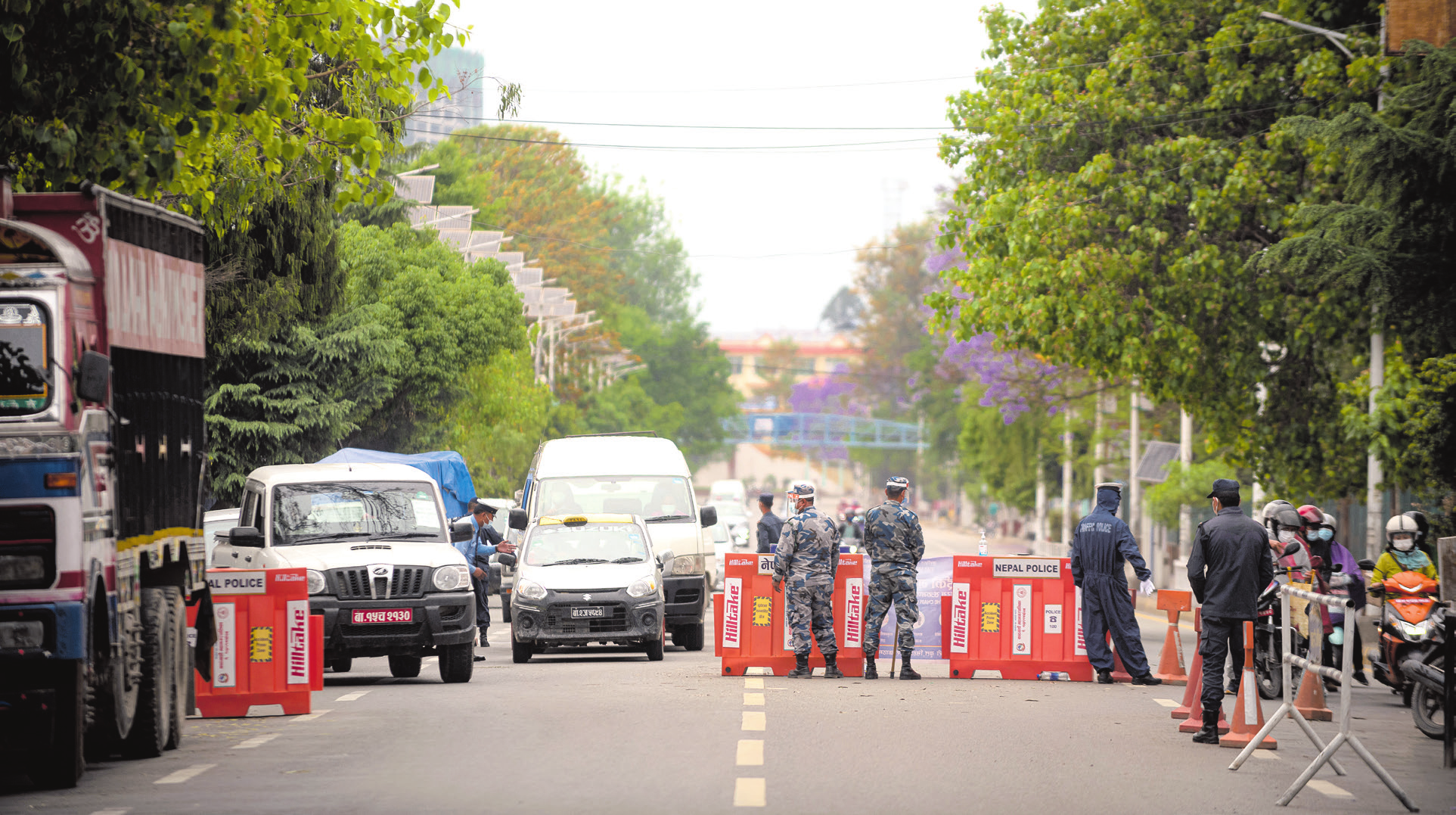
“We are in a medical emergency but many don’t seem to understand the gravity of the situation,” says SSP Kunwar. He adds that it’s not unusual for people to be prancing about for silly reasons. Some are out on the pretext of having to buy paracetamol. Others cook up elaborate stories of going to visit an ailing relative at a hospital, only to look baffled and start stuttering when asked to provide the said relative’s name and room number.
SSP Kunwar thinks people were scared during the 2020 Covid-19 lockdowns but now the threat, for some unfathomable reason, doesn’t seem so real to them anymore. He wonders why people aren’t taking necessary precautions despite all that we’ve been hearing about the new virus variant.
On day one of the lockdown, 2,538 people were kept at different holding centers around Kathmandu for defying prohibitory orders. Day two saw a further increase in people doing so, with 4,219 being sent to the holding centers. On day three, 3,724 people were similarly held.
Confusion, thus chaos
According to SP Sushil Singh Rathore, the public seems confused about what’s allowed and what’s not. He says there is currently a semi-lockdown situation with only private and public vehicles barred from the roads. But with government offices, banks, and other organizations continuing to operate, there is a lot of movement.
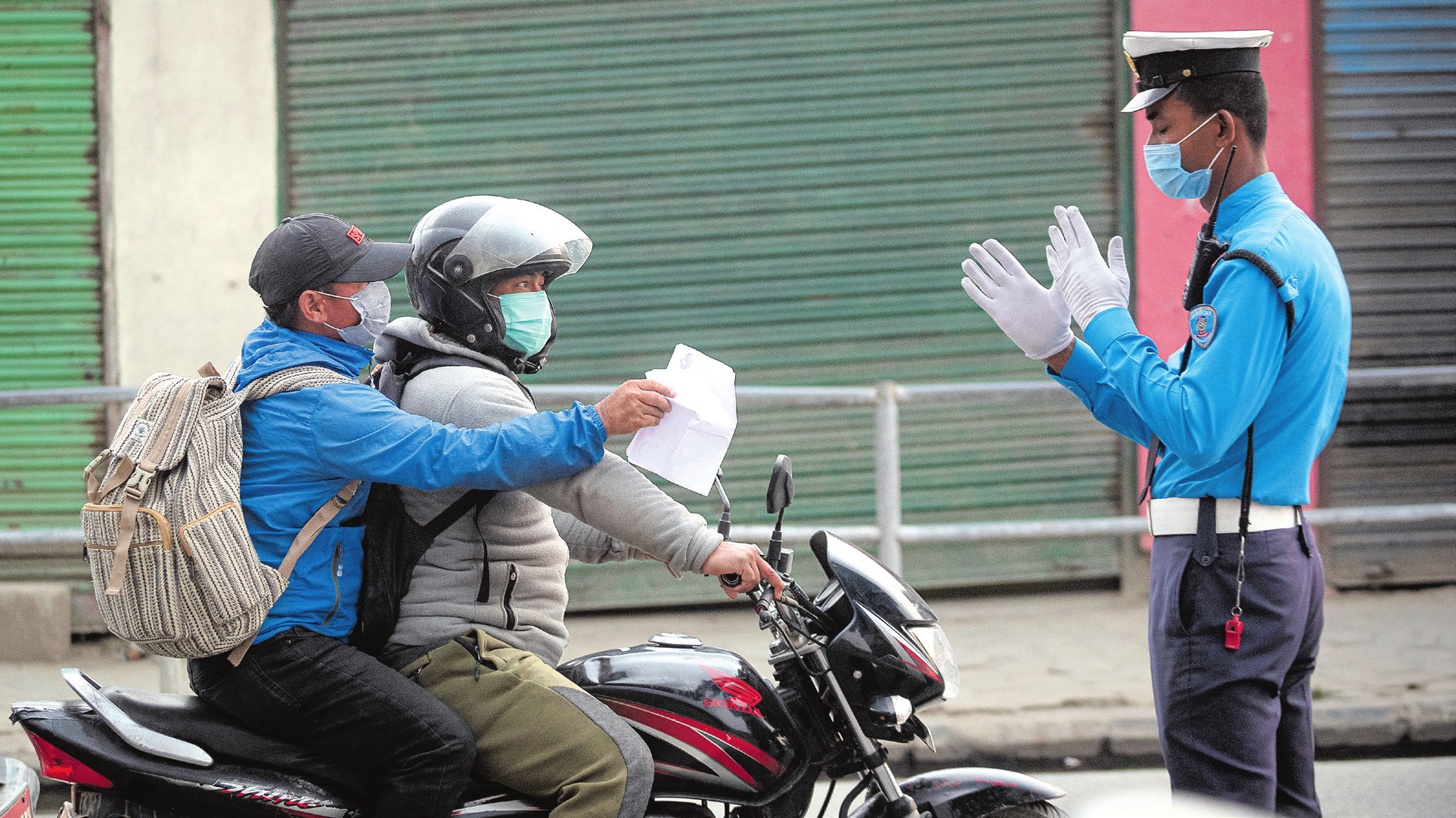
The movement can basically be attributed to three factors that need to be addressed by the authorities, says DSP Nabin Koirala. There’s the airport excuse—you are either traveling or picking up someone. (Now, with the suspension of internal flights and only two flights coming in from New Delhi on a weekly basis this excuse may no longer hold.) The other cover-ups have been PCR testing and going out to buy medicines.
“People tend to loiter around when out to get groceries in the morning. They don’t just do their shopping and go home. When we ask them to return, they lash out and question if we want them to starve,” says DSP Karki.
The police, adds SP Rathore, have been told to make sure everyone who is out has a genuine reason for it. So, those stationed at various checkpoints around the valley try to verify people’s reasons for being out when they should ideally be staying in. From calling their family members and colleagues to asking for medical reports and prescriptions, there are all sorts of ways to find out if someone is telling the truth. But most people are ready with solid alibis.
Except during the 7 am to 10 am slot, the police try to be as meticulous as possible about checking people’s passes and official documents. If they are found moving about unnecessarily, the police try to make them aware of the repercussions of their actions and caution repeat offenders. The argumentative ones, and there are quite a few, are taken to one of the valley’s 150 holding centers.
The problem is that very few are compliant, says SP Rathore. That often results in close contact between the police and public, which puts both parties at risk. Many people aren’t masked and nor do they follow social-distancing protocols. There have been instances when those out on the streets have refused to return home and dared the police to take them to the holding centers.
Public provocation
What many fail to understand is that the police aren’t brandishing their ‘power’ here. This, the police say, isn’t a situation where people should be fined or punished for their behavior, and they aren’t doing so either. Rather, their daily briefing, at an ungodly hour, is all about how they need to be kind, polite and request people to abide by the rules.
Everybody is going through hard times and the police are aware of the need to be empathetic. But telling someone to do what they don’t want to generally comes across as insensitive and sometimes even downright cruel. Thus, the police are often at the receiving end of taunts and emotional blackmail, with many people even trying to provoke them.
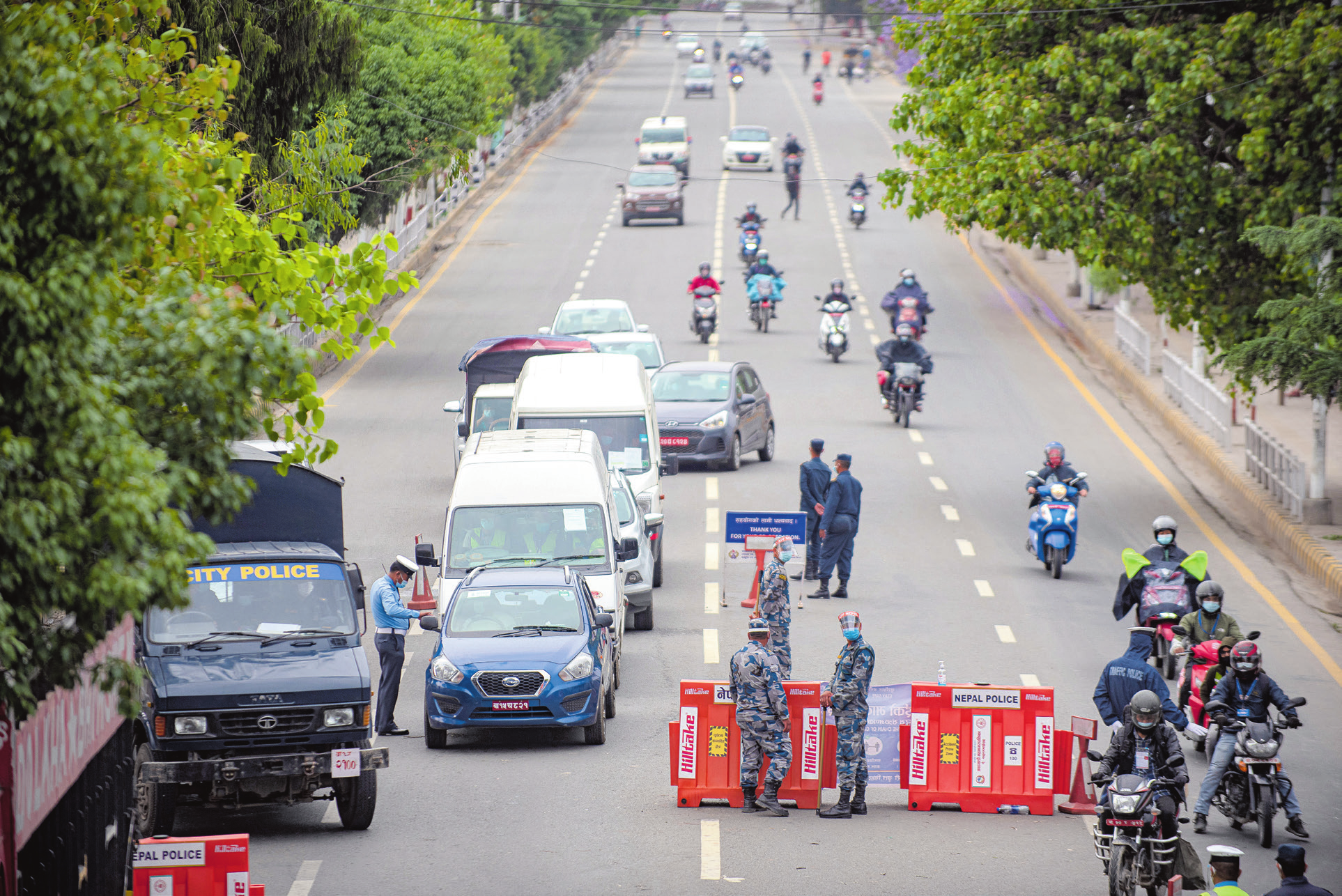
“There have been instances when the police have been provoked just to get a reaction. When an officer, who has been on duty for, say, 10 hours, gets irritated, someone whips out his phone and makes a video,” says SP Rathore. He adds that such 20-second clips show police shoving someone into a van, scolding someone, or behaving rudely. What they never show are what led to those particular moments.
He says he isn’t making excuses for bad police behavior. No matter what, the police have absolutely no right to be harsh with the public. Their primary aim is to serve and maintain order. But provoking the police for a viral video is becoming a regular thing and that’s problematic.
Another seemingly insurmountable issue, say police spokespersons across stations, is that of shops in inner roads and alleys. Most small businesses try to stay open at all hours. They will hurriedly close the shutter when there’s police checking but, half an hour later, they open up again.
Altercations between shop owners and police are frequent, with the former often blaming the latter of trying to take away their livelihoods and make them suffer.
“Many behave like this is something they are being forced to do for others. It’s almost as if the virus poses no danger to them whatsoever,” says DSP Karki.
Friend not foe
SP Prajwal Maharjan, on the other hand, says there have been other pressing problems in recent days. One is of accidents due to speeding on empty city roads, especially in Ring Road. The other is concerned with domestic violence. The police have had to stop people on the roads to advise them to drive slowly as well as visit homes to settle disputes.
Daily calls to the police helpline (100) have increased during the lockdown, says sub-inspector Prem Shrestha. There are in equal parts complaints and queries and it’s becoming a herculean task to address them all.
All the police officers ApEx spoke to for this article say they feel at a loss right now. On one hand, they have to carry out their orders to ensure safety while on the other, they also realize why the public is angry and annoyed. It’s a difficult time and people feel trapped, scared, and helpless, which in turn make them hostile too.
What would help is for everyone to be a little more responsible, if not for their own sake, then for their loved ones, says SSP Kunwar. To beat the virus, we should all support one another and follow the government’s orders. Blaming the police and trying to deceive them serve no good purpose.
We are all guilty of pointing fingers at the police without checking our own actions. And that behavior only seems to have escalated in recent days. News of police forcefully closing stores or behaving ‘inappropriately’ travels fast. But rarely do we hear about the public misbehaving with them. Human nature is such that we are quick to make excuses for our own actions while not granting the same liberty to someone else.
Every police officer you see out on the road is talking to hundreds of people daily, says SSP Kunwar. S/he is saying the same thing to all of them—telling them to put on their masks, asking them where they are going and why, and requesting them to minimize movement. Each of them, just like the rest of us, is also dealing with personal problems in their lives.
Today, when the police too would have preferably stayed in if their duty didn’t call, it is upon us to be a little more considerate. SP Rathore begs for a little support and compassion. DSP Karki wishes people wouldn’t resort to name calling. Most crucial, however, SSP Kunwar says, is to understand the seriousness of the situation and see the police as their friends who have their best interests at heart.
Diet | Healthy eating in the time of Covid
The 2020 Covid-19 lockdowns had people either cooking elaborate meals (think Butter Chicken, Prawn Biryani, and Malai Kofta) or restricting their food intake to lose weight, says Rocky Maharjan, nutritionist and trainer who is passionate about body building. Some turned to food for comfort while others wanted to fit into a dress that had always been a little too tight. But food, says Maharjan, is meant to nourish and help your body function at its best.
“This time when you are stuck at home again, reevaluate your relationship with food. Let it be your key to wellness,” he says.
What Maharjan means is you should use food as a tool to lead a healthy life and not take your equation with it to extremes—where it’s either your best friend or your worst enemy. The key it to be conscious of what you are eating and better understanding your bodies’ requirements.
Bhupal Baniya, nutritionist at Nepal Police Hospital, says most people started taking nutritional supplements during the pandemic. While there’s definitely an upside to popping zinc tablets and sucking on Vitamin C lozenges, you could just as easily get these essential nutrients from food. That way, he says, you don’t run the risk of any kind of toxicity.
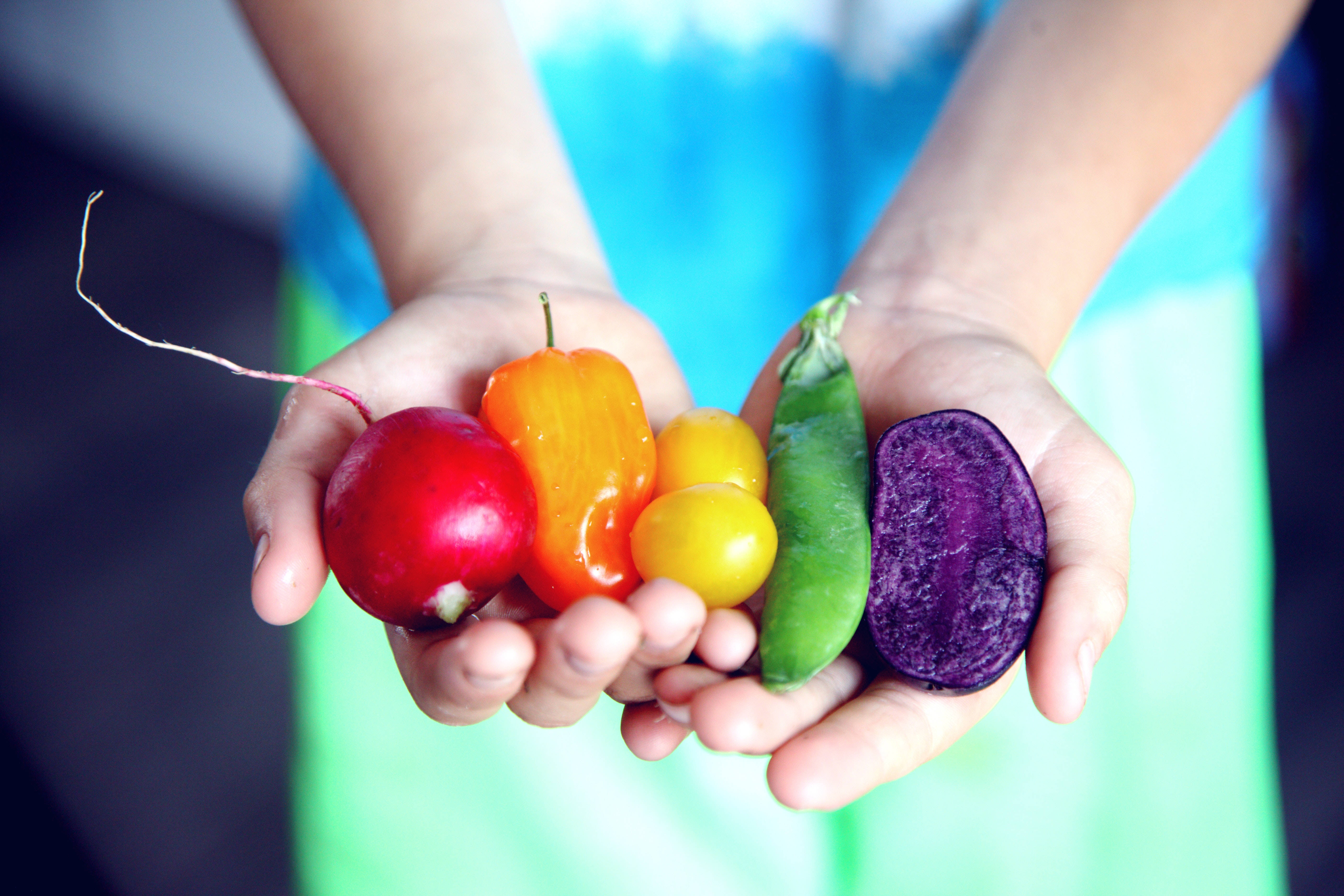
“Most people choose quick meals. They use food to satiate their taste buds and nutrition is the last thing on their minds,” say Baniya, adding it would be a good idea to educate yourself a little about food and strive to eat nutritious meals that are filling as well.
If there’s one thing Covid-19 has taught us it’s the importance of good health. And a sure shot way to stay healthy is to ensure you are eating right. The old adage ‘you are what you eat’ couldn’t be truer since the trillions of cells in your body need a constant supply of nutrients for optimal functioning. Food affects these cells and, by extension, your overall health, sleeping habits, brain function, energy levels and mood.
Maharjan recommends eating fresh, homemade and seasonal food, keeping your medical conditions, if you have any, in mind. Eating in moderation and not staying away from certain food groups are also crucial if you want to stay fit and healthy.

A comprehensive vegetarian diet plan prepared by experts at Danphe Care, a Kathmandu-based healthcare management company. Danphe Care has been providing medical consultations to Covid-19 patients under home isolation. Kabin Maleku, program coordinator, says they are focusing on a holistic approach to Covid care and, for that, the right diet plays an important role. A vegetarian version of the diet plan is also available upon request.
We indulged in copious amounts of turmeric lattes and masala teas during the pandemic. PM Oli even said besar pani could be our savior from the pandemic, a scientifically dubious claim. But herbs and spices do have tons of other health benefits. What’s good about Nepali kitchens, says nutritionist Baniya, is that we already use these goodness-rich spices in our food. You could also tweak your cooking methods to include a variety of spices and condiments.
“Herbs and spices have medicinal properties that help prevent many illnesses and inflammatory conditions,” says Baniya. But just because something is good doesn’t mean you should consume large quantities of it. For instance, excess besar pani could potentially lead to liver problems.
“Most people know only about the benefits of including certain things in their diets. You should also understand how much is enough,” he says.
As it is summer and the days are getting hotter, it’s best to consume warming spices in moderation, advises Dr Rishi Ram Koirala, ayurvedic physician who has been practicing for four decades.
“I recommend you chew five to six pods of black pepper daily as well as have raw onions with Himalayan pink salt,” he says. These, he explains, have anti-microbial properties and destroy mucous.
But a strong immune system is as much a result of eating a balanced diet as it is about giving your body a boost with specific immune-strengthening ingredients like turmeric, ginger, garlic and fenugreek.
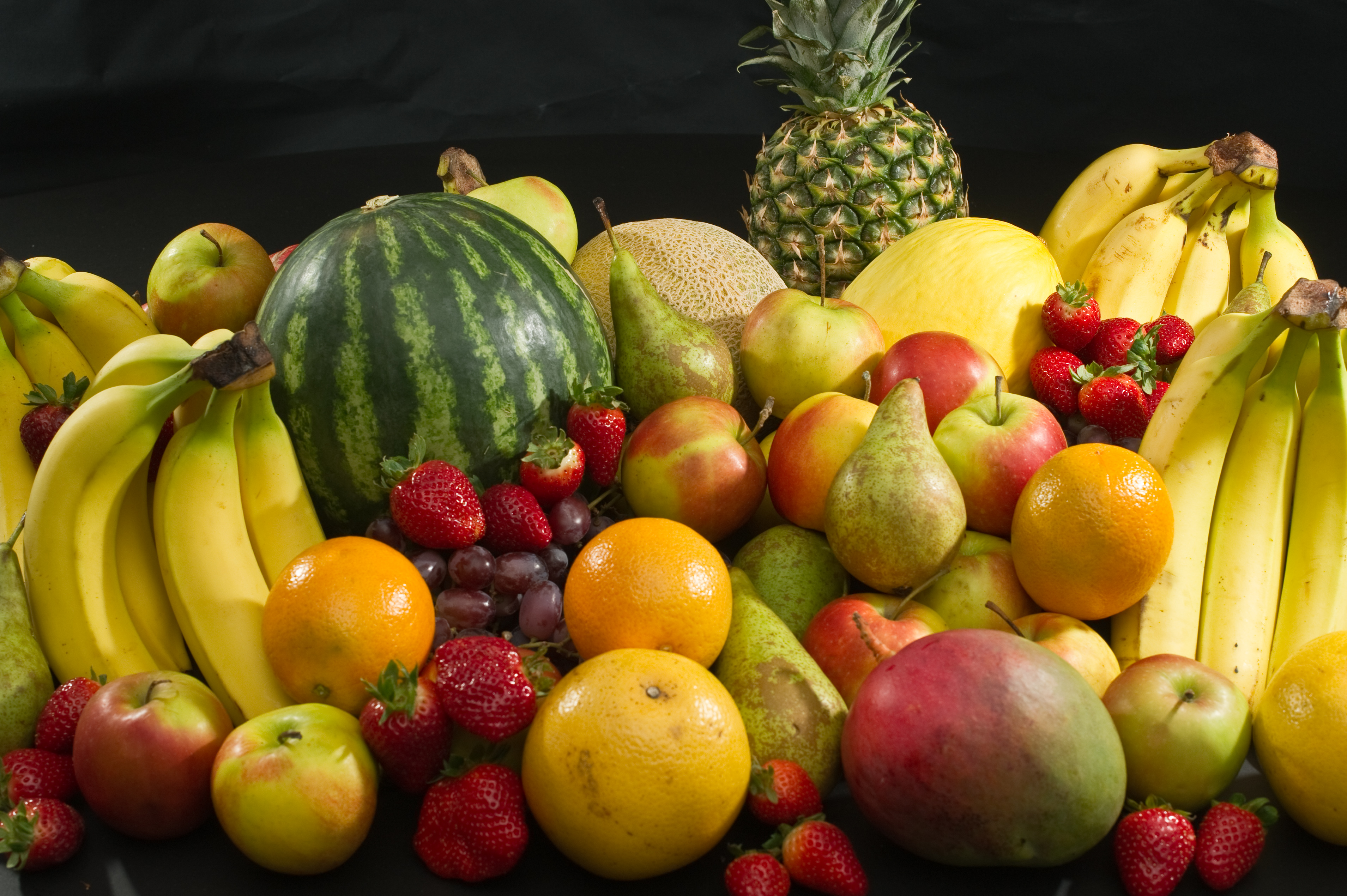
Dietician Priyanka Sainju, who works at B&B Hospital in Gwarko, Lalitpur, and at Vatsalya Natural IVF in Naxal, Kathmandu, recommends eating a variety of fruits and vegetables daily. This, she says, is something we all know but also something we all neglect as well.
“I can’t stress the importance of having at least two servings of fruits and vegetables a day. They provide vitamins and minerals the body needs. If macros—carbs, proteins, and fats—are the building blocks of your body, essential nutrients are what convert food to energy, repair cellular damage, and keep your bones, muscles, heart, and brain functioning properly,” she says.
The dietician also suggests abstaining from fried, greasy food and instead opting for whole foods, as close to their natural states as possible.
Additionally, nutritionist Baniya advices not consuming milk tea immediately before or after meals as well as not eating those things that cause oxidative stress, which is harmful to the body. (A diet rich in fat, sugar, and processed food causes oxidative stress.)
But wellness in these difficult times has to also go beyond healthy eating, says Dr Koirala who is also the director of Ayurveda Health Home, an alternative and holistic health service. He says there are a few basic things you should practice.
First, he recommends oil pulling, an Ayurvedic practice that draws toxins out of your body. All you need to do is take a tablespoon of oil in your mouth and swish it around for five minutes before spitting it out. This lessens your body’s viral load, says Dr Koirala. He advises rinsing your mouth with warm salt water immediately after and following up by drinking lemon water. Dr Koirala recommends consuming the juice of three lemons a day.
“For overall health and wellness, you must learn to manage stress as well. Stress lowers immunity and makes you susceptible to various diseases,” concludes Dr Koirala.
LGBTIQA+ community of Nepal: Life on the margins
Nepal is the first South Asian country to recognize transgenders. In 2010, the Election Commission added the ‘third’ option to voter rolls. It was replicated in immigration forms soon after. In 2011, the country became the first in the world to include a ‘third gender’ in its census. In 2015, passports had the option of a third gender and the constitution too, in the same year, addressed the rights of LGBTIQA+ people in Articles 12, 18, and 42.
With the recognition of third gender and legal provisions, Nepal’s LGBTIQA+ community has been granted social and political rights. Compared to the rest of South Asia, Nepal seems to have made a lot of progress.
Unfortunately, much of it is limited to paper.
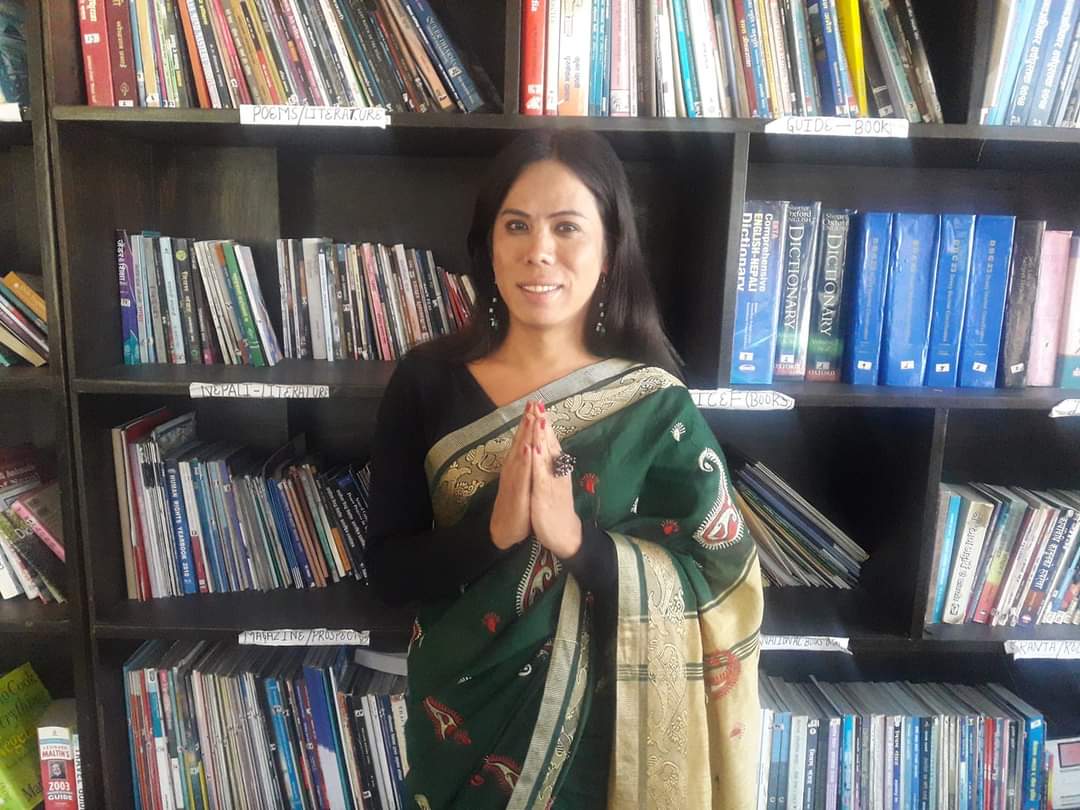
Pinky Gurung
Pinky Gurung, president of Blue Diamond Society, Nepal’s oldest queer rights organization, says Nepal might have garnered a lot of fame and appreciation for its progressive LGBTIQA+ laws but the reality is far from rosy.
“The implementation of laws is weak. So, our lives are no different than they were 10 years ago. Actually, it’s even more difficult today because we are caught in a system that must legally recognize us but doesn’t,” says Gurung.
Though the constitution has granted LGBTIQA+ community equal rights—it states no individual shall be discriminated on the basis of gender—in reality, everywhere preference is still given to men and women. ‘Others’ are just that, others. This has led to an identity crisis, stemming from lack of dignity.
Insensitive dealings
Bhakti Shah, transgender activist, says Nepal government has time and again tried to address LGBTIQA+ issues. There have been some major accomplishments but the laws aren’t clear and sometimes that complicate things.
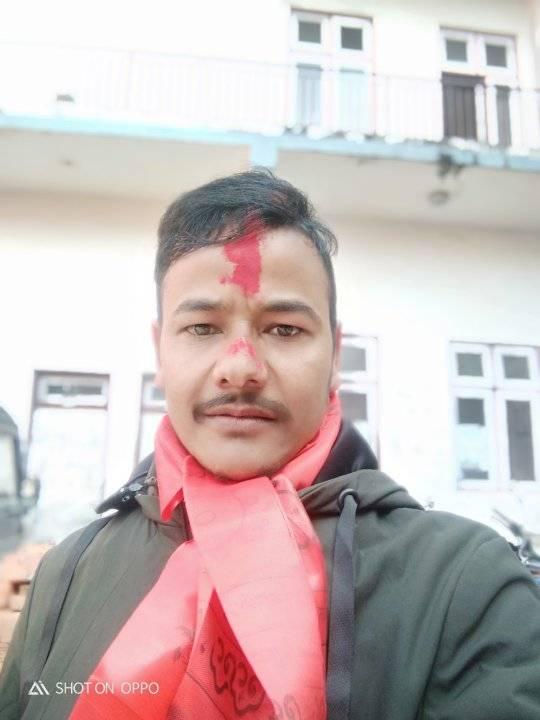
Bhakti Shah
Take for example something as basic as acquiring a citizenship that most of us consider a birthright. Though it’s possible to obtain a citizenship identifying as ‘others’ instead of the standard male or female, there are issues that make it a herculean task. Recently, the government passed an order whereby a sex change operation certificate became mandatory for people of LGBTIQA+ community to obtain citizenship.
“It’s difficult for LGBTIQA+ people to get work. Most have a hand-to-mouth existence. How will they afford such an expensive surgery?” says Shah.
However, it isn’t just a matter of expense as these complicated, often life-threatening surgeries are mostly done abroad. It’s also about choice, says Shah. Some might not want to undergo these complex procedures. That’s not taken into consideration.
Gurung laments LGBTIQA+ people have become political agendas, face police brutality, societal scorn, and are seen as bad examples. Equal treatment is a far-fetched dream as sexual and gender minorities are dehumanized on a regular basis. It happens everywhere, she adds, and LGBTIQA+ people are struggling socially, mentally, and economically.
“We still face a lot of challenges in every aspect of life. There isn’t a safe place where we feel like we belong,” says Gurung. People of the community just don’t have the options available to men and women. It’s also unfair to expect them to compete with the general population when they haven’t been given the same opportunities in life.
Hassles and humiliations
That’s perhaps why Neelam Poudel, makeup artist, transgender model, and social activist, is adamant about creating opportunities for herself. She realized early on that, outwardly, people appear to understand and accept LGBTIQA+. But the truth is they often have deep-rooted biases that are hard to shake off.
Poudel says she has made a lot of ‘friends’ over the years. They all said they would fight for her cause and help create an empathetic environment for transgenders. But only a few of them showed up when she put in a lot of effort and organized a fashion show, ‘Neelam’s runway’, in March 2021.
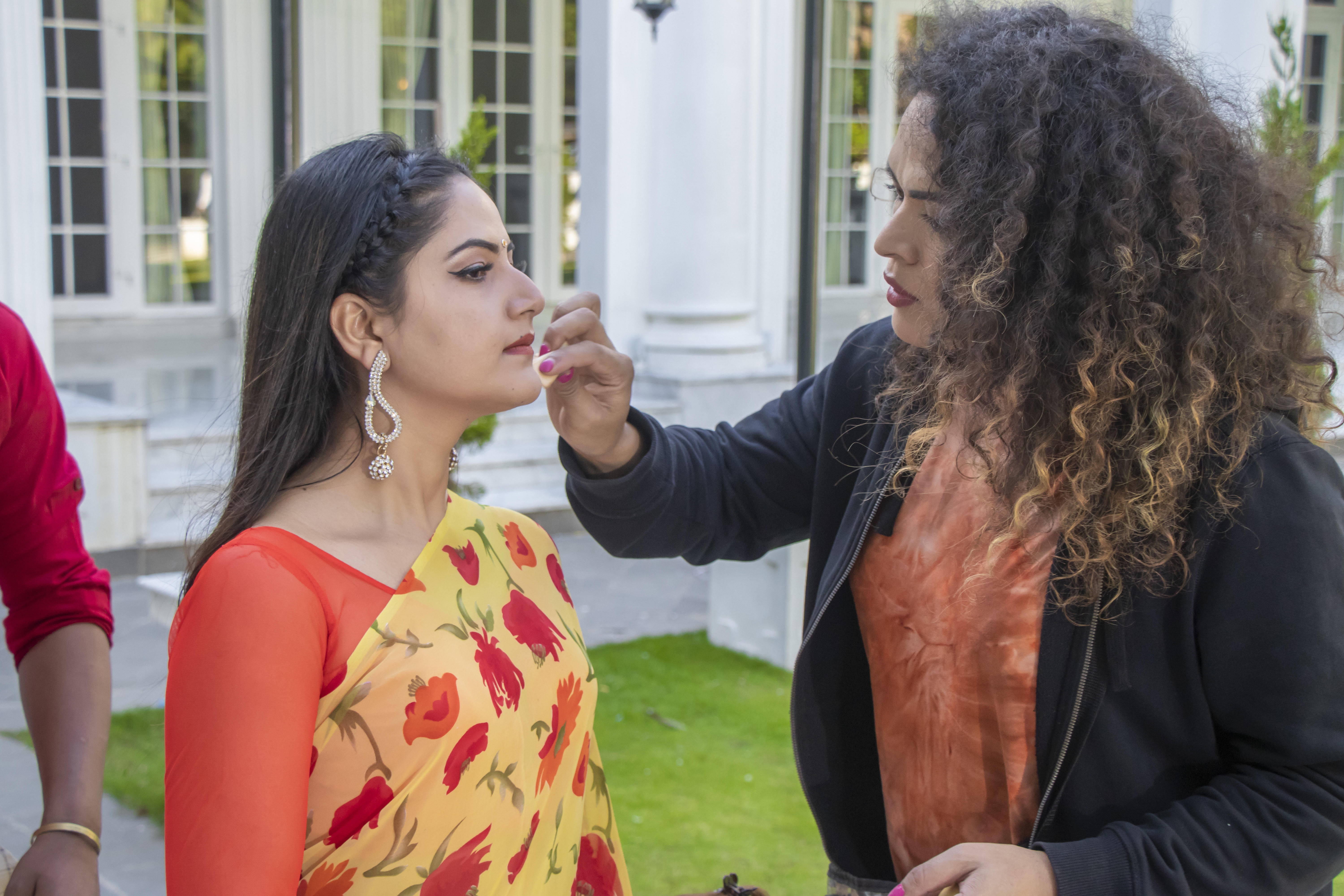
Neelam Poudel (right)
“The negativity will only make me work harder and create a name for myself. But that might not be the case for many LGBTIQA+ people who are ostracized by their own families and are struggling to survive,” she says.
At the National Human Rights Commission (NHRC), Undersecretary Manju Khatiwada has similar sentiments. LGBTIQA+ people are mistreated everywhere and it begins at their own homes. She has seen it happen all too often. It’s a sad reality, she says.
During the Covid-19 lockdowns, Khatiwada says there were 16 reported cases of suicide in the community. Some felt trapped within their homes where they were misunderstood and unwanted. They were coerced to ‘be a man’ or ‘act like a woman’ and/or get married. Others didn’t get basic support—that was given to most daily wage earners—from the government as their identification documents weren’t considered authentic.
Shah says the lockdown was a time of a lot of hassle and humiliation. First, proof of citizenship was made compulsory to get government aid and many didn’t have that. Second, those who had the document found it difficult to prove it was theirs. The only way out of this conundrum for some of his friends, he says, was to end their lives.
“A woman’s name accompanies a man’s photo and vice versa in most citizenship documents of the 300-odd people who have managed to get them till now. It’s a bit confusing,” he says. Moreover, he adds, hormones have thickened or loosened their voices, making it difficult for people to identify them unless there are aware of their circumstances.
Sometimes people are shocked by our existence and it shows on their faces and demeanors, he adds.
Problematic mindset
Khatiwada says members of the LGBTIQA+ community didn’t get access to government quarantine facilities in various parts of the country during the pandemic. The reason: the authorities couldn’t determine or decide where to keep them. What we saw then, she says, was a massive violation of basic human rights and dignity.
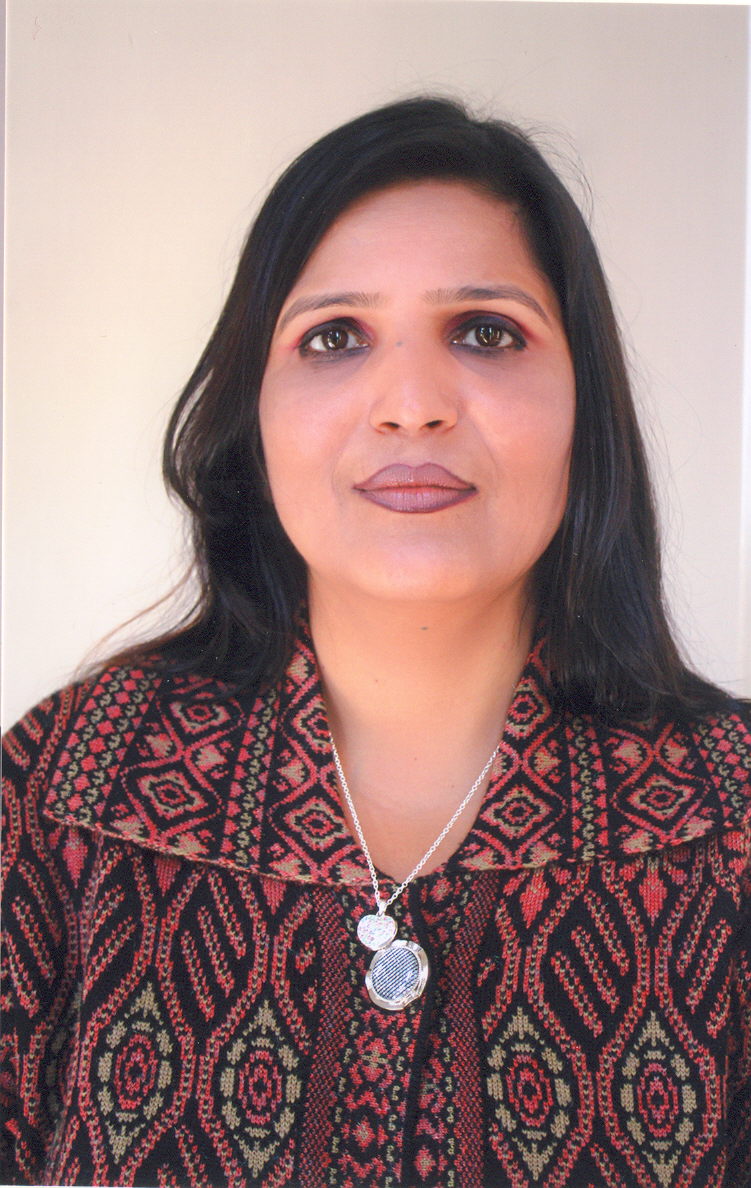
Manju Khatiwada
“The main problem is that they still aren’t treated as humans. There is a lot of discrimination and the society looks down upon them. The laws haven’t improved their lives,” says Khatiwada.
Sunita Lama, LGBTIQA+ rights activist, believes the problems arise because the government doesn’t take this section of society seriously. She agrees with Shah and says their issues are continually brought up in parliaments, ministries, and courts. But things get stuck because of protocols and authorities’ indifference and inability to come to a decision.

Sunita Lama
For Lama, what’s even more disheartening is that there seems to be absolutely no change in people’s mindset. Things, she says, were different two decades ago. There was no internet and people had limited ways to get information. Now, they have access to so much content. It’s surprising they are still oblivious about LGBTIQA+.
This hints at a deeper problem, says Sarita KC, executive director at Mitini Nepal, an organization lobbying for the rights and dignity of lesbian, bisexual and transgender people. Though Nepal has come a long way from the time homosexuality was a criminal offence, the society is still apathetic because it’s adamant about adhering to strict gender norms.
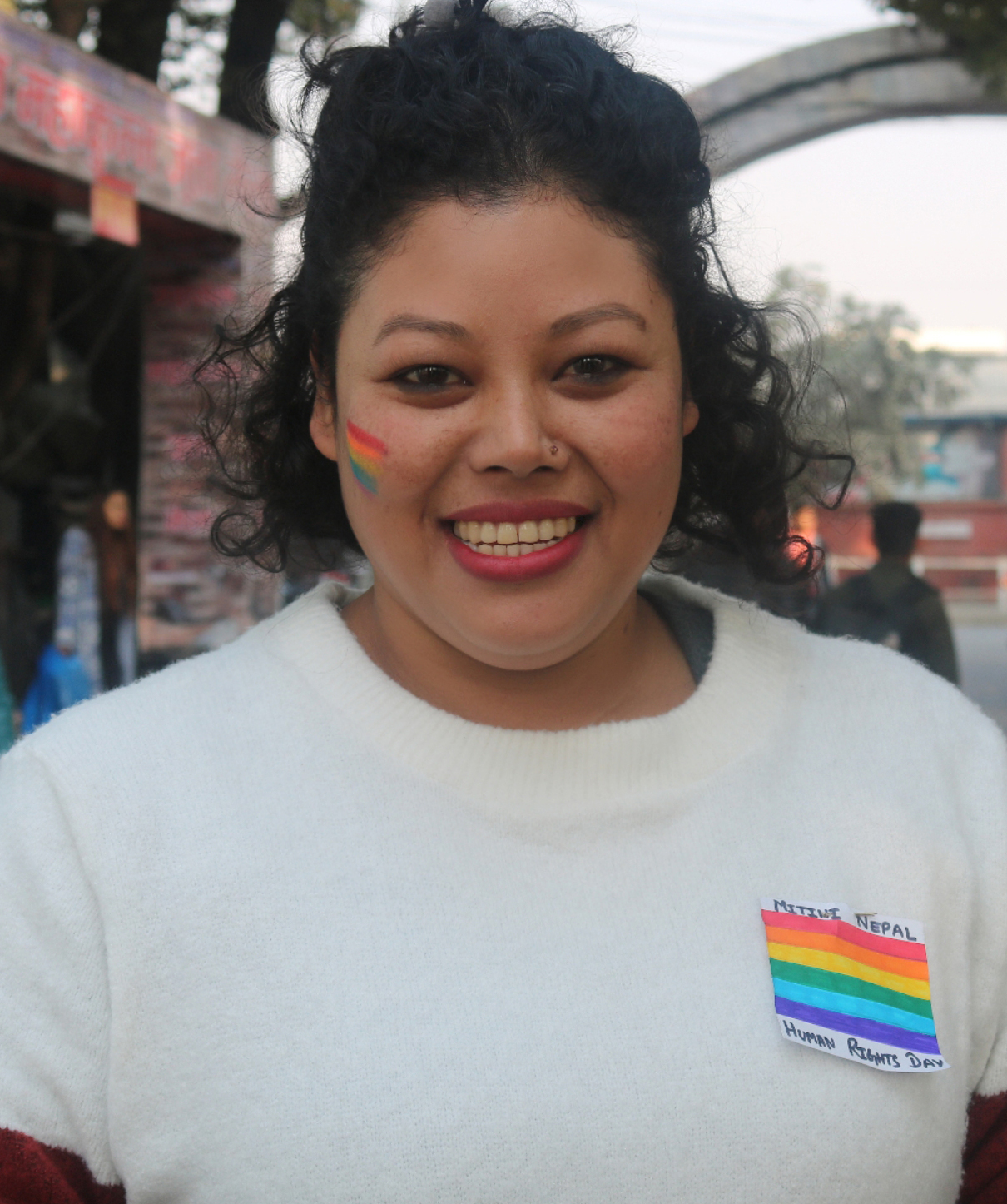
Sarita KC
“Attraction is thought to happen only between a man and a woman. A man liking a man or a woman liking a woman is considered disgusting. Children are still told its bad,” says KC.
Then there’s the issue of representation. LGBTIQA+ voices don’t reach rule makers because there is not a single person from their community in places of power. The problem, KC adds, is that most people who make the rules neither understand their issues nor do they care, often finding them ‘unnatural’ and thus only worthy of contempt. This disregard stops them from treating LGBTIQA+ people as humans, forget equals.
Step at a time
Raunaq Singh Adhikari, an advocate with Kantipur Law Associates, says there is a need for greater sensitivity in dealing with the issue. The law clearly states everyone is equal irrespective of who they are. The problem is our collective failure to emphasize oneness and treat people with compassion.

Raunaq Singh Adhikari
“I would like to tell people of the LGBTIQA+ community to not lose hope. The law is never static. It’s ever changing. And we live in a democratic society where you have the power to change what you don’t like,” he says.
His suggestion is to lobby for change, but to do so in a way where you aren’t trying to move a mountain all at once. It would be best to focus on one problematic area and work on fixing a single thing at a time. He gives the example of the ‘Sunil Babu Pant vs. Nepal government’ case of 2007 that mandated that the country would recognize all its citizens without exceptions.
The loophole in that ruling—the basis of many legal amendments to finally include LGBTIQA+ people in the constitution—was that non-binary identities, and there are many, weren’t properly defined. Also, sexual orientation was used to determine gender identity when these are two completely different things. There are many issues that need to be fixed, says Adhikari.
“But LGBTIQA+ issues can’t and shouldn’t be addressed in isolation, with each government body doing its own thing. There needs to be an integrated social, political, and legal approach,” adds the advocate.
But, above all, the people ApEx spoke to for this story believe the responsibility to create an LGBTIQA+ friendly community lies on each and every one of us. The key is accepting that gender is manmade but nature is not and learning to co-exist by embracing our differences.
Craft with a conscience
In the recent times, #madeinnepal has become a movement. More people these days seem to favor locally made goods—clothes, bags, jewelry, etc.—compared to imported, factory-manufactured products. While earlier you would have to choose from a handful of companies and businesses, there is now a plethora of options. Even better, you don’t have to scour the market anymore. Thanks to mostly Instagram, it’s all available online.
Behind That Veil, run by 29-year-old Erica Sithling, joined the mushrooming community of online businesses in late 2018. The idea was to create a platform for handmade jewelry crafted by those affected with leprosy and people living with disabilities.
Sithling holds a fulltime job at Nepal Leprosy Fellowship (NLF), a non-profit that operates in the eastern region of Nepal—namely Jhapa, Morang, and Sunsari. One of its programs is giving handicraft training to people and they are also taught to make jewelry. But Sithling says there isn’t much of a market for handmade jewelry in eastern Nepal. So, trained people aren’t able to find work or generate an income from their skills.
“I thought of starting a venture to promote handmade jewelry in Dharan, which is where I live, and the surrounding areas,” she says. She started with a modest investment of her own and gave employment to three girls with leprosy. She came up with a few designs and taught the girls how to make them and took it one step at a time from there.
The initial response was good and people, mostly friends and family, loved the pieces they had come up with. In two years, her company has gathered a loyal clientele. Sithling is happy she is able to provide some source of constant income to those who need it.
“Business was a little slow during the Covid-19 lockdowns. But once it was lifted, whatever we had in stock got sold pretty quickly,” she says.
Sithling believes in quality craftsmanship, which is why production only happens twice or thrice a year at most. Limited pieces of each design, 10 to 15, are made and sold locally in Dharan and Kathmandu. In Kathmandu, Behind That Veil jewelry can be found at K Beauty Nepal in Kapan. You can, however, also place orders through their Instagram page (@behindthatveil) and the products will be couriered to you. (This will cost you an extra Rs 100 per order.)
The shipping cost is worth it because the designs are simple, classy and reasonably priced. The maximum price is Rs 700 for good quality pearl earrings. Simple stone or crystal earrings cost Rs 250 while slightly more elaborate ones are priced at Rs 350. Bracelets range from Rs 350 to Rs 550. Behind That Veil also makes necklaces depending on what’s in demand in the market as well as takes customized orders as long as the required materials can be sourced locally.
“The market is competitive and it’s hard to sustain a business unless you are able to cater to customers’ changing needs and wants. But I want to focus on making jewelry that’s exclusive so I intend to stick to stones, crystals and pearls,” says Sithling.
The aim of Behind That Veil, she adds, is to support leprosy patients and as long as that goal is being met, she’s in no hurry to expand. However, Sithling wanted to open a retail store before the pandemic but she has, for now, put those plans on hold.
“I want to focus on the local market and create a buzz about Behind That Veil by producing pieces that feel like an investment,” she says. The products support a cause and that already seems to be a reason enough for some people to continually support the company. But Sithling believes that shouldn’t be the only reason customers place repeated orders.
That’s why she spends every spare minute researching new design ideas on Pinterest, styling the jewelry for good pictures to post on Instagram, and curating her Instagram feed for an aesthetic feel. She wants buying jewelry online to be a pleasant and rewarding experience for her customers and her Instagram account stands testimony to that effort.
“I never intended to run Behind That Veil as a profitable business. I was just doing whatever I could to help. I intend to continue in that vein while ensuring people get their money’s worth,” she concludes.
People in no mood for another lockdown
Kathmandu is abuzz with rumors of a lockdown. Most have heard “through the grapevine” that Covid-19 cases are surging and a lockdown is imminent. But Kathmanduites seem to be in no mood to stay at home. Not again.
Siddhi Ratna Bajracharya, 45, who owns a jewelry shop in Pulchowk, Lalitpur, says normal life has barely resumed and the economy is still struggling. A lockdown now will take us, quite literally, to the depths of despair.
“Many of us are just regaining our sense of self. We are slowly recovering from the physical, mental, emotional, and financial trauma we suffered during the lockdowns last year. Another one will kill our spirits. That’s worse than what Covid-19 may do to us,” he says.
Bajracharya contracted the novel coronavirus in the latter half of 2020. His symptoms were mild and his family members weren’t infected. He considers himself lucky that way. But the stress of having to stay at home while his business suffered huge losses every day and his savings dwindled took a big toll on his mental health.
“It was more difficult to get over that than it was to recover from Covid-19,” he says.
Indeed, every person ApEx spoke to seemed to think that being cooped up at home was worse than suffering from Covid-19. There’s definitely a general sense of unease but there’s hardly any fear. Most people have had enough. They just want to go about their days as they did before the pandemic and let destiny take its course.
Balvadra Subedi, 52, owner of Subedi Store at Babarmahal, Kathmandu, says a lockdown isn’t the solution anymore. The lockdowns in 2020 didn’t accomplish what they were supposed to primarily because Nepal went into a lockdown when there were hardly any cases of Covid-19 and came out of it as cases were beginning to show.
The government, Subedi says, should now focus on minimizing crowds and speed up the vaccination drive. Meanwhile, sealing the borders and controlling inter-district movement could help.
“Last year, a lot of people suffered from Covid-19. But many also suffered because of hunger. Nepal shouldn’t make the mistake of being apathetic towards its poorest citizens again,” he says.
Cause for concern
The consensus was that lockdown is a luxury of the rich. It’s Dashain come early for those with palatial homes and sizeable bank balances. But for those who depend on daily earnings to feed their families or are confined in small spaces, it’s a harrowing and humiliating ordeal.
Kumari Tamang, 37, a daily wage earner who has been working and living in Kathmandu for over two decades, says another lockdown will mean packing her meager belongings to go live in the village.
Tamang cleans and cooks for a family in the morning and evening and runs a tiny store during the afternoon. She is the sole earner in her family of four and is barely able to make ends meet after paying her children’s school fees.
“I couldn’t go to school so I will do whatever it takes to make sure my son and daughter get a good education. That’s always been the priority,” says Tamang. Unfortunately, that means she will be unable to pay rent and buy food if there’s another lockdown and her work is affected.
Similar to hers is 39-year-old Prabina Shrestha’s story. She says when you have rent, bills, and daily expenses to manage, lockdown brings about a lot of instability and anxiety.
Shrestha, who runs a small grocery store in Jawalakhel, Lalitpur, says she fears the disease but she’s worried about her daughter’s future even more.
Her daughter, she says, has already spent a year away from school, hampering not just her formal education but her learning abilities as well. Shrestha thinks a lockdown will make children, who already don’t particularly enjoy studying and going to school, even more unruly and complacent.
“Children need a sense of routine and discipline. This kind of on-and-off lockdown and uncertainty are harmful for their growth,” she says.
ApEx spoke to some students who expressed their concerns over the necessity and impact of a lockdown. A lockdown, they believe, won’t be effective in stopping the virus from spreading. What it will do instead is instill unnecessary fear and drain our energies as well as resources.
“The government needs to learn from its past mistakes and find other measures to prevent the spread of the coronavirus. It shouldn’t implement a futile control method just to show it’s doing something,” says Sejal Sainju, 19, a student at St Xavier’s College.
Her friend Rahul Shrestha, 19, who studies in Kathmandu Model College, says online education is still a new concept and thus it’s not as effective as classroom learning. You tend to be distracted as well as procrastinate a lot when you study/work from home, he adds.
Shifting the focus
All the people ApEx spoke to said there are no upsides of a lockdown, only disadvantages and harmful consequences. Not even one spoke in its favor.
The problem is that currently most Nepalis aren’t following basic safety measures. Those in the government have also allowed mass gatherings and rallies when it has suited them. The collective opinion is that you can’t run amok like the pandemic never happened and then shut yourself at home when things get out of hand—which essentially seems to be the government’s approach. A lockdown only makes sense when you have exercised all other precautionary methods and nothing has worked.
Bhairabi Ghimire, 31, executive at Chaudhary Group, says limiting movement from one district to another and imposing stricter rules around border areas could be an efficient way to curtail infection. A partial lockdown—closing of public places and restricting movement during certain hours—could work if implemented early on.
“The government should give priority to building proper quarantine and isolation facilities and equip hospitals to better handle Covid-19 cases. The focus needs to shift to minimizing infection and ensuring recovery,” she says.
Ghimire’s statement was met with approval when people were asked if they thought that could be a sensible, more humane way of dealing with the pandemic.
Hari Shrestha, 43, businessman, says government efforts have been directed largely at stopping the spread. But in a pandemic caused by an air-borne virus, it’s perhaps only a matter of time before the majority of the population contracts it in some form. How to deal with the infection isn’t an area the government has looked into but it’s high time it did, he adds.
Speaking at Nepal Health Conclave on April 6, Minister for Health and Population Hridayesh Tripathi said Nepal government would take necessary measures to avoid another lockdown.
He added that daily cases of Covid-19 could peak around June this year, if proper measures aren’t taken. The government has begun antigen testing at border entry points as coronavirus cases are increasing in India. Tripathi also urged people to be vigilant and exercise caution to reduce risk of infection.
His statements, however, did nothing to pacify people who called it routine and redundant. What’s worse is that people no longer take the government seriously because it’s notorious for saying something and doing the exact opposite. Hari Shrestha says he wasn’t surprised. He expected the government to tell people that the onus lies on them and do the bare minimum themselves.
“The government can’t afford to be lackadaisical in its efforts to curb the spread of the coronavirus if it is honest about avoiding a lockdown,” he concludes.
Reading their way out of lockup
In a police lockup in Nawalpur, a district in Nepal’s Gandaki Province, detainees can often be seen engrossed in books. Not only does it help them pass time but reading might even be their ticket to getting out of custody sooner.
“People are kept in lockup for 25 to 90 days, based on the nature of offence. We will consider shortening their sentences depending on how many books they read,” says SP Prakash Malla, District Police Office, Nawalparasi East.
‘Hirasat ma Kitab’, that provides reading materials to detainees, is one of SP Malla’s five initiatives, a part of the police program Working Extra Mile to bring positive changes in the community. The idea behind this particular initiative was to ensure a more humane treatment of those in lockup, prevent custodial deaths, and reduce stress that can build up in a closed setting.
“Reading helps bring about a shift in people’s perspectives. I think it’s especially necessary for those who have been involved in crimes,” says Malla. Since at any given time there are 10 to 15 people in the small space, and they are only required to work for an hour or two every day, reading keeps them engaged. Otherwise, they would have spent the rest of the hours sleeping, he adds.
(1)_20210402192654.jpg)
However, getting those accused of various offences to read is also Malla’s attempt at a different kind of policing—one that prioritizes a change in mindset over retributive punishment.
Today, there’s a decent sized library of sorts at the police station in Nawalpur with over 500 books, both in English and Nepali. The books have been donated by local authorities, police, community folks, as well as Malla’s friends. They have even brought in books like Subin Bhattarai’s ‘Summer Love’ and ‘Saaya’ based on requests by the detainees.
“Surprisingly, people wanted to read and asked for specific books. Some wanted English novels. Quite a few seemed to gravitate towards spiritual books. We try to get them what they want,” says the SP.
Fiction is popular because most detainees are under the age of 25. Malla says that’s when stories appeal to you the most. There are also some who ask for books on law and religion as well, and spend all their time poring over those.
The station keeps a record of who has read what and how much time each of the detainees has spent reading. Based on their reading habits and subsequent behavior changes, the detainees might be able to go home sooner than expected. This acts as an incentive to read as much as they can. One detainee, Malla says, has read 19 books already.
Malla hopes they give continuity to their reading habit when they are eventually back to their regular lives. So, the plan is to have someone from the station check in on them six months after they are let out.
Malla has also been using his network to promote this system of reading beyond his station. The program has been replicated in two other municipal stations in Nawalpur—Gaidakot and Dumkibas. He recently got calls from the police headquarters inquiring about the initiative as well.
As an avid reader, Malla is always reading something. He recently finished Yuval Noah Harari’s ‘Homo Deus’ and is currently reading ‘The Origins of Political Order’ by Francis Fukuyama. It’s his love for books and the compulsive need to read, he says, that gave birth to ‘Hirasat ma Kitab’.
“I used to find fiction entertaining and read a lot of it at one point in my life. Today, I prefer non-fiction—books on politics, economics, and history—because I think they have a lasting impact,” says Malla.
You could also say ‘Hirasat ma Kitab’ is being run with an ulterior motive. Malla hopes it will change how people view the police as well as improve the relationship between the two.
The reality is that people are mostly scared of the police. As law-enforcers, their job demands they put up a strict front. Malla’s initiatives, of which ‘Hirasab ma Kitab’ is a small part, are focused on cultivating respect and understanding between the police and the public as well as making people aware of violence, its causes, consequences, and how it can be prevented.
“I believe a reading habit can be the start of many positive changes and a great deterrent for crime as well. Also, people will read if they have the means to do so. We are exploring that avenue as well,” concludes Malla.



